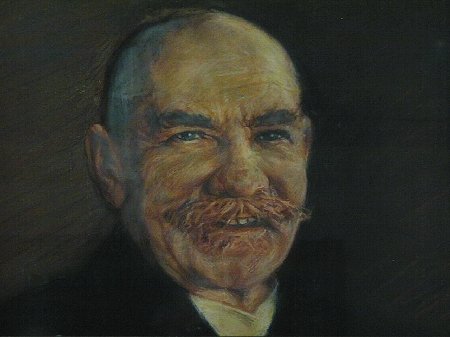


Four members of the Senate, who had sought refuge in Vaasa, placed themselves at the head of the white Finnish administration. The Vaasa Senate gave orders "as the only legal government elected and empowered by the parliament and responsible to it". The machinery of the administration, i.e. the provincial and communal authorities, were, practically speaking, at the disposal of the Senate as such in the areas of white Finland. Temporary central administrative agencies were set up in Vaasa.
The military committee of the Senate, i.e. the War Ministry, had been abolished in 1903, and their duties transferred to the committee of internal affairs. Senator Alexander Frey was in charge of military matters in Vaasa. Decisions concerning the army – apart from the general guidelines of action – were made in the army. Despite of their attempts the Senate was not able to take over in these matters. In foreign policy, however, the Senate pushed through their policy and decided that the German expedition, which was on its way to Finland, had to be accepted. Mannerheim would have preferred Finland to remain neutral in relation to the parties of the world war. After the arrival of the Germans it was difficult for Finland to convince the world of her neutrality. At the suggestion of the Senate Mannerheim nominated "his own man", the ex-senator, Lieutenant-Colonel Harald Åkermann (29 March), to act as his contact man in the Senate.
The President of the Senate, P.E. Svinhufvud and Senator Jalmar Castrén arrived in Vaasa from Helsinki on 24 March after a long round tour by way of Germany and Sweden. The arrival of the speaker of the Senate generated the idea all over the country that the position of the Senate would now be stronger. In practice, the Senate wanted to have their say in the appointments of the commanders too, but yielded to Mannerheim’s views.
In April 1918, the members of the Senate who had been hiding in Helsinki resorted to action again, and for a few weeks’ time there were two Senates giving orders. The Vaasa Senate, however, took the lead, and in early May both the parts of the Senate were united.
Commander-in-Chief 1918 | Headquarters 1918
| Vaasa Senate | Hannes Ignatius
| Martin Wetzer | Harald Hjalmarson
| Ernst Linder | Gösta Theslöf | Jägers | St Petersburg Question | Relations with Germany | Cross of Liberty
| Eastern Karelia | Uusimaa Dragoon
Regiment | Fir Twig | Finnish Flag
| Swedish Brigade | Civil Guards | Jäger Conflict | Heikki Kekoni | Red Prisoners | Wilhelm Thesleff
| Aarne Sihvo | Rudolf Walden |
Air Force - Air Weapon | Red and White
Terrorism | Great Parade 16 May, 1918 | Åland Question | Monarchy | Mannerheim's Resignation
COURSE OF LIFE | FAMILY | TIME OF GROWTH | MILITARY CAREER | WAR OF INDEPENDENCE | REGENT 1918-1919 | CIVILIAN | DEFENCE COUNCIL | COMMANDER-IN-CHIEF 1939-1946 | PRESIDENT OF THE REPUBLIC 1944-1946 | RETIREMENT | SPECIAL TOPICS | SEARCH